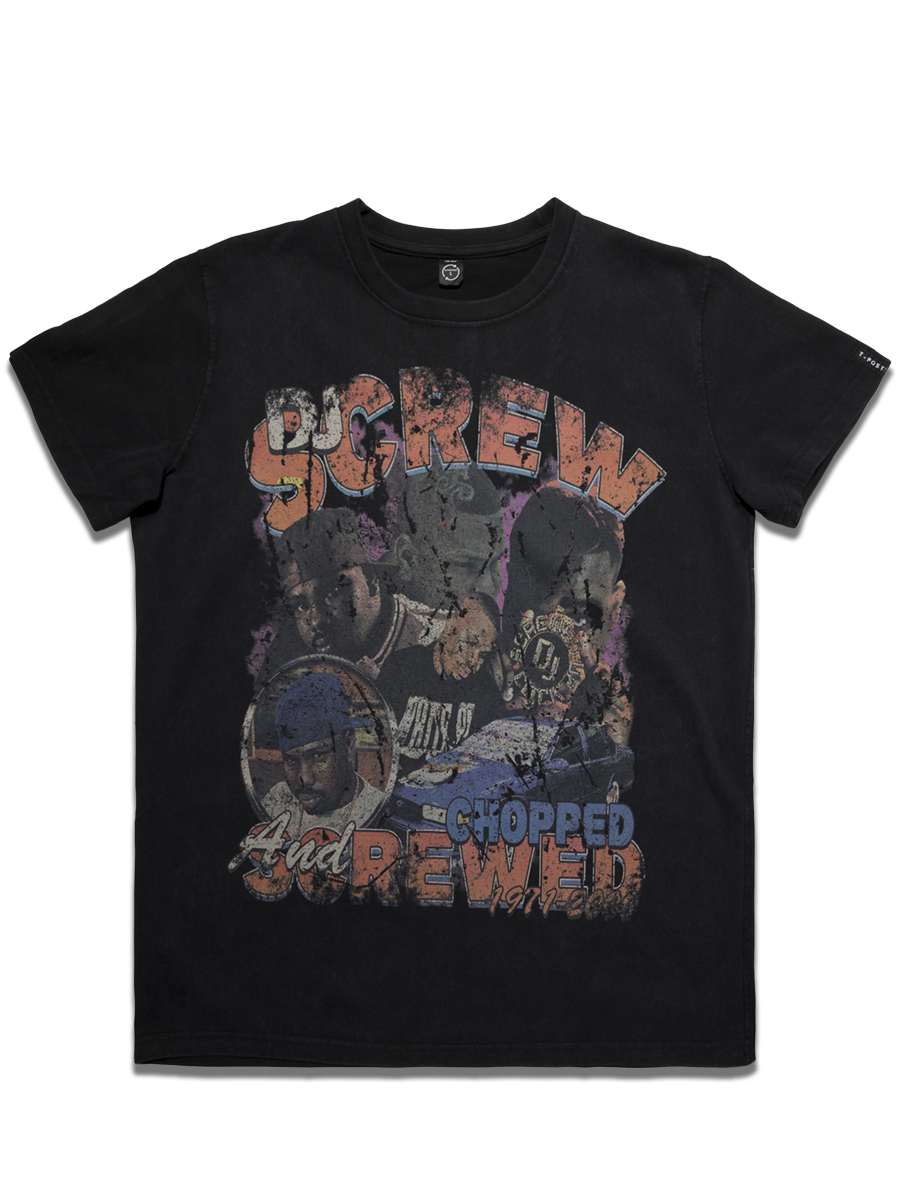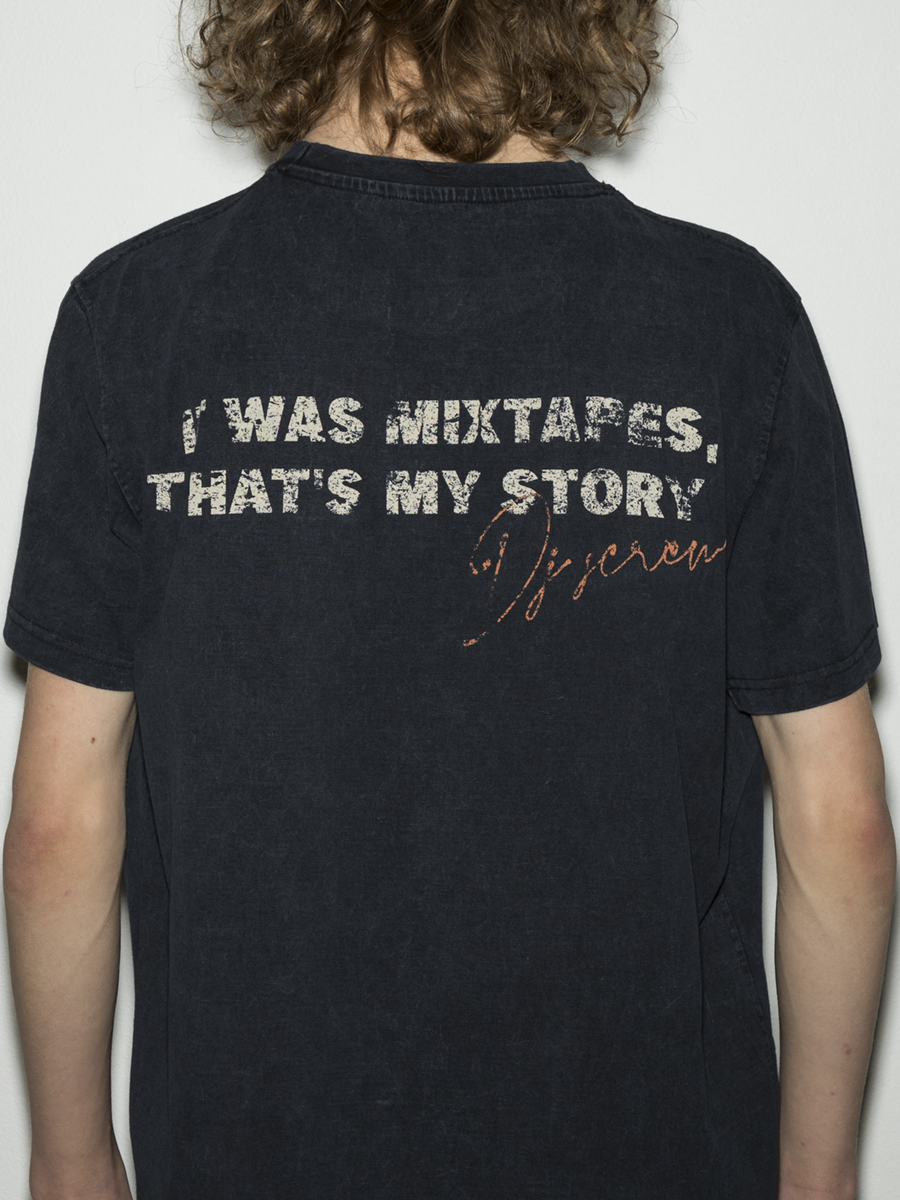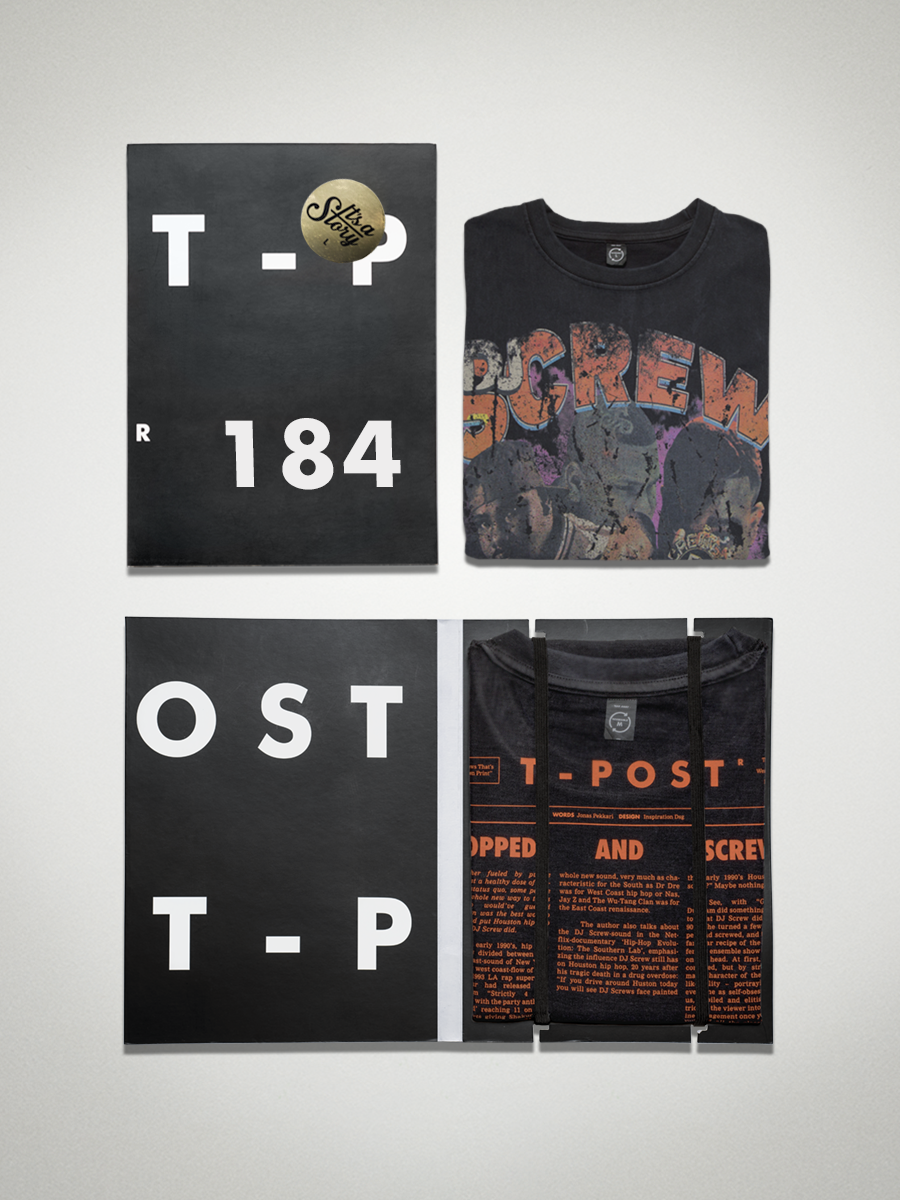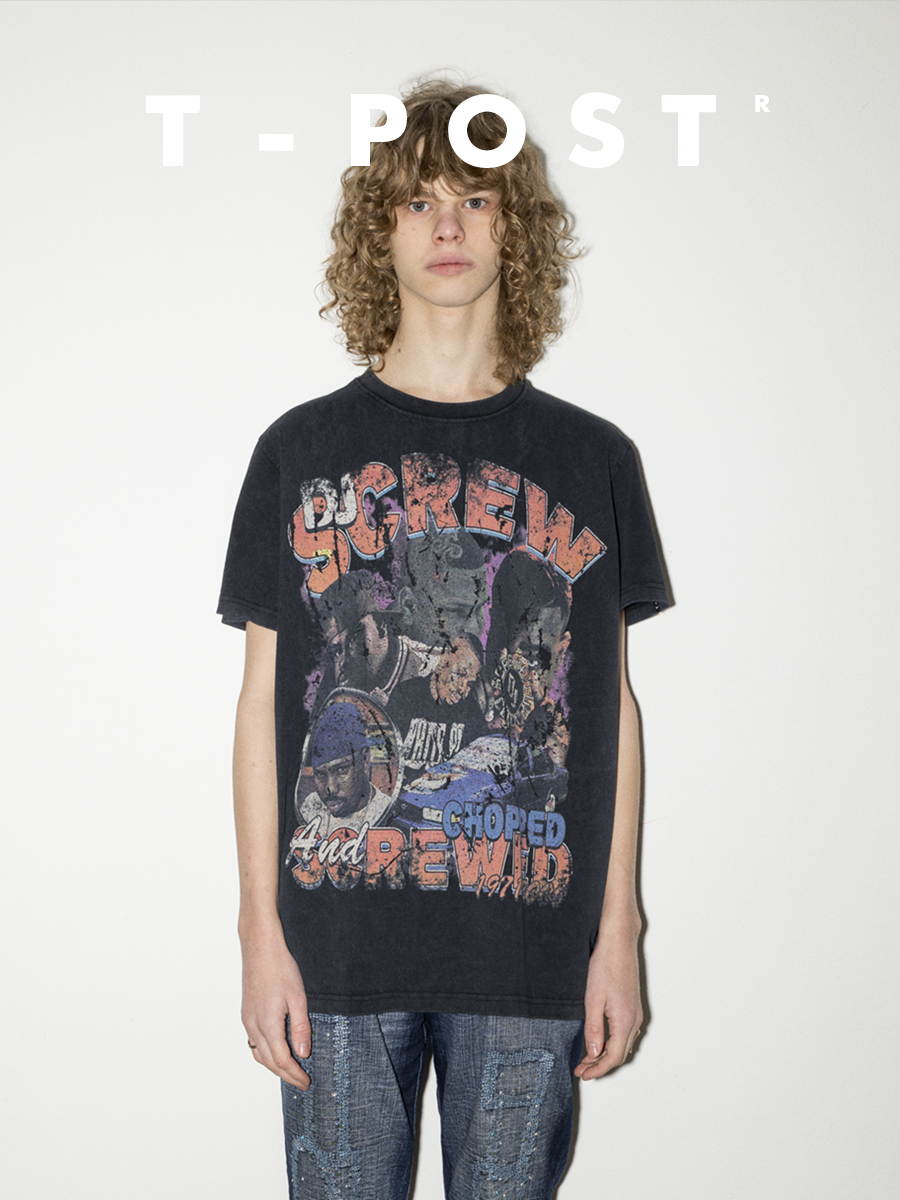Chopped and Screwed
T-POST® #184

In the early 1990’s, hip hop was basically divided between the gritty east coast-sound of New York and the funky west coast-flow of Los Angeles. By 1993 LA rap superstar Tupac Shakur had released his second album “Strictly 4 My N.I.G.G.A.Z...” with the party anthem ‘I Get Around’ reaching 11 on the Billboard charts giving Shakur his real popular breakthrough. At the same time over in New York The Wu Tang-Clan released the epic album “Enter the Wu-Tang” changing the path of hip hop forever. For us Scendinavian kids watching hip hop evolve through MTV and the mainstream charts it was all about New York and LA with LL Cool J, Onyx, Salt-N-Pepa, Mobb Deep, Cypress Hill, Fat Joe, De La Soul, Snoop and Ice Cube – but in Houston Texas, something new was a brewing.
Robert Earl Davis, Jr aka DJ Screw grew up in Smithville, Texas and began DJing at age 12 in 1983. He started experimenting with slowing down the tracks on mix tapes in 1990, creating a whole new sound. At first people were confused, but along with the “chopping” – taking a handclap and scratching it with another track, creating an after-effect – the DJ Screw phenomenon was born.
Who would’ve guessed slowing down was the best way to get ahead and put Houston hip hop on the map?
By 1992 this had become his focus as the mixes started getting traction and customers began requesting his mixes buying them on tapes sold out of DJ Screws home.During the early 1990s, he invited some of the Houston MCs from the city's south side to rhyme on those mixes, this coalition of emcees eventually becoming the fathers of the Screwed Up Click – today considered some of the key figures of creating Houston hip hop. In the book DJ Screw: A Life in Slow Revolution author Scott Walker shows how DJ Screw created a whole new sound, very much as characteristic for the South as Dr Dre was for West Coast hip hop or Nas, Jay Z and The Wu-Tang Clan was for the East Coast renaissance.
The author also talks about the DJ Screw-sound in the Netflix-documentary ‘Hip-Hop Evolution: The Southern Lab’, emphasizing the influence DJ Screw still has on Houston hip hop, 20 years after his tragic death in a drug overdose: “If you drive around Huston today you will see DJ Screws face painted on the walls, you will see people wearing his shirts, you’ll hear his music in the streets. His legacy is very much alive, and the sound is global now. So many people have adopted – and adapted – Screws sound. Every time you hear hip hop slowed down; it comes from him.” To this day DJ Screw’s style can still be heard in fellow Houston rappers Bun B, Pimp C, Paul Wall, Chamillionaire, and Slim Thug. DJ Screw proved that sometimes turning a few knobs will revolutionize everything.
When 27-year-old director Lena Dunham had her new show greenlit by HBO she had already created a bit of a buzz. She’d written, directed, and starred in the independent movie ‘Tiny Furniture’ which earned her a couple of awards, but more importantly: it got the attention of producer Judd Apatow.
Now I know what you’re thinking: “What the fuck does a show about white college-girls in uptown New York have to do with the early 1990’s Houston hip hop scene?” Maybe nothing. Maybe a lot.
See, with “Girls”, Lena Dunham did something very similar to what DJ Screw did in the early 90’s. She turned a few knobs, chopped and screwed, and took the very familiar recipe of the stereotypical female ensemble show and turned it on its head. At first, people were confused, but by stripping every main character of their immediate likeability – portraying virtually everyone as self-obsessed, obnoxious, spoiled and elitist – Dunham tricked the viewer into a more genuine engagement once you got into it. You had all the classic roles: The promiscuous one, the virgin, the princess, the hippie. But where Sex and the City was clean, sharp, and beautiful – Girls was gritty, casual and warped. Dunham frequently put her character in nude-scenes which provoked some nasty reactions, due to her body not living up to traditional tv-beauty-standards. “There’s people who don’t want to see bodies like mine,” Dunham has said in interviews at the time.
And just like DJ Screw sparked a new sound for Southern hip hop, Lena Dunham inspired a new school of tv shows. The show “High Maintenance” is very much a product of the “Girls-movement” and offers a unique look into New Yorker’s lives as the weed dealer “The Guy” delivers chronic around the city. Netflix’s “Love” (coincidentally also produced by Judd Apatow) portrays the lovable fuckup Mickey (Gillian Jacobs) and her attempts at a relationship with the awkward dork Gus. “Euphoria” shows the lives of a bunch of drug-bingeing, sexually ambiguous and/or promiscuous mid-western teens, and Broad City tells the tale of BFF:s Ilana and Abbi, fucking and smoking their way through New York’s hipster scene. Without Girls none of these show’s would most likely have seen the light of day.
So, here’s to the creative weirdos out there, chopping, screwing and tweaking culture to keep it interesting. We salute you.






